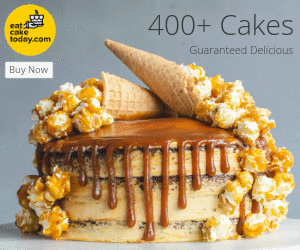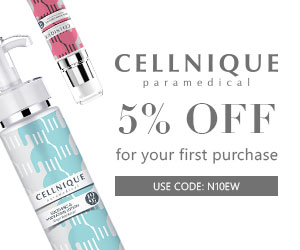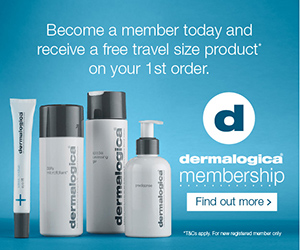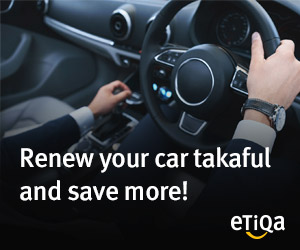Megan Mosley (2017) defines word of mouth (WOM) as a free form of advertisement or promotion. It's shared by customers and triggered by an event the customer experiences. This event is something beyond what's expected meanwhile word of mouth is defined by Olga Rogacka (2015) as the passing of information from person to person.
According to Nielsen, 92% of consumers believe recommendations from friends and family over all forms of advertising (Kimberly A. Whitler, 2014). Customers referred by their friends spend more: 20% to 50% of purchases are the result of a word of mouth recommendation (Olga Rogacka, 2015).
A customer talking about their experience with you is worth ten times that which you write or say about yourself, according to David J. Greer meanwhile Mark Zuckerberg (Facebook's founder) quoted that “People influence people. Nothing influences people more than a recommendation from a trusted friend. A trusted referral influences people more than the best broadcast message. A trusted referral is the Holy Grail of advertising.”
Why does word of mouth marketing work so well? The answer is obvious - trust. You are much more likely to trust a recommendation from a friend over a company. For example, if I am thinking about buying a car, I am more likely to listen to my neighbour’s recommendation about his experience than that Volvo advertisement on TV. As such, word of mouth marketing is 10 times more effective than a traditional advertisement (Lizzy Funk, n.d.).
WOM also doesn't stop after just one interaction. One person will tell another, and that person will someone else, then that person will continue the chain and spread the word further, making it a great vehicle for exposure and distribution if used well (Megan Mosley, 2017).
Of course, the same is true in reverse - negative news can spread just as fast (Megan Mosley, 2017). A poor review and a customer likely to spread plenty of negative word of mouth. For instance, If you treat customers poorly or sell lousy products, people will know and tell other to stay away (Matt Warren, n.d.).
Customer experience became a more powerful factor than the price. Once customers have an amazing experience, they start to talk about it. And that is the true value of worth of mouth – truly happy customers talking about your product or service (Olga Rogacka, 2016).
How to Use Word of Mouth Marketing (WOMM) ?
Connect with consumers, as opposed to 'collecting' them (Megan Mosley, 2017).
The problem is that for the last few years, marketers have been focused on “collecting” instead of “connecting.” In other words, brands are too caught up in collecting social media fans and they are forgetting to actually connect with them. Having 100 really passionate fans that love your brand or product is exponentially more effective than having 10,000 “fans” who signed up just to win a free iPad from you (Kimberly A. Whitler, 2014).
You have to establish connection with those users to generate any tangible benefit. If your audience is not interested in you, they're not likely to help you grow. They're collecting dust and clogging your real fan base (Megan Mosley, 2017).
You want real fans and supporters. The more passionate your fans are about you, the more likely they'll share you (Megan Mosley, 2017).
Four Tips to Help Maximize WOM Potential
1. Social Currency
We care about how we are perceived by others. That’s the reason sharing things that makes you look fun/good/interesting. This entices sharing. Consumers feel more confident in the information they're sharing when they're contributing something that's worth talking about. For example, research has shown that Facebook users are more likely to share content that educates their network, and/or makes them look good and reinforces a certain image of themselves. You can tap into such behavioral trends to benefit your messaging (Megan Mosley, 2017).
2. Create a Trigger
Can you tie yourself into other things that your consumers do or use? If people remember you, they'll continue to talk about you (Megan Mosley, 2017).
3. Provide Value
People like to help others. We often share ideas and solutions which proved to be useful for us. We share them with people we think might benefit from it (Olga Rogacka, 2015).
If you establish yourself with a few people, they'll share the experience with friends. You'll be able to remember an amazing experience or event. For example, you might have gone to a great Japanese restaurant and had a good night out. You know a co-worker who loves sushi - you relate your experience to them (Megan Mosley, 2017).
Sharing valuable information makes you valuable. Great, unique customer experiences, along with having a great product, can help increase your value, and thus, your WOM potential (Megan Mosley, 2017). For instance, Shopify provides a platform where online retailers can sell their stuff without any fuss. On their blog we can find interviews and case studies of successful sites. Apart from that, they also provide guides for improving people’s store. They don’t just sell product. They help customers get better at what they’re doing. Besides offering a great product, they give people practical value, which is the knowledge that can help them sell things online. And it’s all in one place (Olga Rogacka, 2015).
4. Provoke Emotion
Creating emotion goes hand in hand with creating value. People are more likely to share something that promotes high arousal like anger, excitement, amusement, and people are more likely to share experiences in which they had some sort of emotion towards. People share the things that make them happy or upset (Megan Mosley, 2017). These emotions kindle fire, activate people and drive them to take action. On the other hand we are less likely to talk about things that make us content or sad because they decrease arousal (Olga Rogacka, 2015).
5. Stories
People don’t just tell information, they tell stories. Each story, at least a good one, carry a moral or a lesson. And the information comes with it. That’s why content needs to be related to the product it promotes. The brands need to be an integral part of the stories (Olga Rogacka, 2015).
Three E’s Marketing
Marketers used to focus on the 4 P’s. Now marketers need to focus on the three E’s: Engage, Equip, Empower. If you can master these, you can become the most beloved and talked about product in your category, which will ultimately lead to increased sales. A good WOMM campaign able to generate thousands of conversations, recommendations and triple sales in just a year (Kimberly A. Whitler, 2014).
1. Engage - Give your fans the gift of you. Engage with them. Listen to what they are telling you. Be part of the conversation about your brand. Be a presence in your fans’ lives. @NikeSupport is a prime example of customer service done well. They constantly respond to followers on Twitter, whether it’s about their apparel, Fuel Band or other products. Every few minutes, you can watch them respond to someone new (Kimberly A. Whitler, 2014).
2. Equip - Give them reasons to talk. It can be amazing products, great service, insider knowledge, social elevation, incredible stories, unbelievable facts or even funny disclosures. It’s on you. It really depends on you understanding your consumers and what they like about you and providing whatever it is they need from you. Apple revolutionizes technological devices and delivers amazing products to its consumers, allowing them to naturally raze about the newest iPhone. Another area to excel in and that’s on the rise is social customer service (Kimberly A. Whitler, 2014).
3. Empower - Give consumers different ways to talk and share. Let them know that they are important to you and that sharing their opinions is important to you. Help them find ways to share within their circles and find ways to help move their conversations around. Lay’s is an excellent example to highlight how they empowered their fans to “Do Us a Flavor,” and allow consumers to create a new flavor of potato chips to hit store shelves. Over 3.8 million submissions were sent in 2013 making it one of the biggest marketing campaigns for PepsiCo owned Frito-Lay (Kimberly A. Whitler, 2014).
How Are Word of Mouth Marketing and Referral Marketing Different ?
Word of mouth marketing is all about creating a buzz. It's a passive way of gaining a following. The more you interact with people the more likely your name will spread. Think of the snowball effect - you start off with a small, interesting post on Facebook. That post impresses a couple people, then those people spread the word. It's about creating mega brand recognition (Megan Mosley, 2017).
Meanwhile, referral marketing is marketing that focuses on targeting a specific person, and is intended to encourage them to refer their friends. Referral marketing is a segment of WOMM, but it's a more proactive way of generating clientele, as you have to actually control the referral process and track the process of conversion. Instead of doing a mass shout-out, the idea of referral marketing is more personal. Referral marketing is more about creating a bond with specific people. That way they'll refer friends and family (Megan Mosley, 2017).
Types of Word of Mouth Marketing
1. Buzz Marketing
It also known as astroturfing. This focuses on getting consumers to create and spread conversation about a product. This grows company awareness through the use of online traffic. Influencers create the 'buzz' - they're the ones spreading the word about a specific product/service. This is usually done via tools that are attention-grabbing, like videos and humor (Megan Mosley, 2017).
2. Blog Marketing
Promoting a product or service via a blog. In this instance, the blogger is the influencer or brand ambassador. Bloggers become word of mouth marketers, word travels to their followers. The blogger provides reviews and ad space to their favorite brands/affiliations. The blogger's followers are then inclined and share the information with friends, based on their established relationship with them (Megan Mosley, 2017).
3. Social Media Marketing
Content on social media has a way of reaching people outside of the original group following. As noted, shared content has a higher value when shared by someone you know and trust. This type of marketing is the hub of marketing, especially referral marketing (Megan Mosley, 2017).
The Advantages of Word of Mouth Marketing
1. Grow Sales Without the Advertising Spend
Many famous brands use word of mouth marketing instead advertising spend to increase sales and fan base (Matt Warren, n.d.).
2. Build a Community
Word of mouth marketing works to build an engaged fan base. Higher engaged customers buy more often and recommend their friends more often, extended your return on time spent on the strategy and generating a high customer lifetime loyalty (Matt Warren, n.d.).
3. More Funding
Brands with high customer lifetime loyalty and therefore repeat purchases receive more angel and venture funding. Why? Because Customer Acquisition Cost to Lifetime Value, is considered one of the most important aspects of a healthy business model in the early days of a company’s life cycle (Matt Warren, n.d.).
Final Thoughts
Keep in mind that a good WOMM strategy is credible, social, repeatable, measurable and respectful. Dishonesty is NEVER acceptable (Kimberly A. Whitler, 2014).
Read more:
1. What's Affiliate Marketing ?
2. The Difference Between Affiliate Marketing and Referral Marketing
Edited by: 浪子
Bibliography
Kimberly A. Whitler. (2014). Why Word Of Mouth Marketing Is The Most Important Social Media. Retrieved from https://www.forbes.com/sites/kimberlywhitler/2014/07/17/why-word-of-mouth-marketing-is-the-most-important-social-media/#f66992254a8c
Lizzy Funk. (n.d.). The Power of Word of Mouth Marketing & How You Can Do It. Retrieved from
https://blog.marketo.com/2015/01/what-is-the-right-vehicle-to-drive-your-email-marketing-success.html
Megan Mosley. (2017). Why is Word of Mouth Marketing so Important? Retrieved from
https://www.socialmediatoday.com/marketing/why-word-mouth-marketing-so-important
Olga Rogacka. (2016). Word of Mouth Quotes and What You Can Learn from Them. Retrieved from
https://www.livechatinc.com/blog/word-of-mouth-quotes/
Olga Rogacka. (2015). Word of Mouth Marketing: How to Get People Talking about Your Business. Retrieved from https://www.livechatinc.com/blog/word-of-mouth/
Matt Warren. (n.d.). Word of Mouth Marketing in 2018: How to Create a Strategy for Social Media Buzz & Skyrocket Referral Sales. Retrieved from https://www.bigcommerce.com/blog/word-of-mouth-marketing/#spark-wom-among-influencers
Why Word of Mouth Marketing Is Important ?
 Reviewed by 浪子
on
October 21, 2018
Rating:
Reviewed by 浪子
on
October 21, 2018
Rating:
 Reviewed by 浪子
on
October 21, 2018
Rating:
Reviewed by 浪子
on
October 21, 2018
Rating:


















